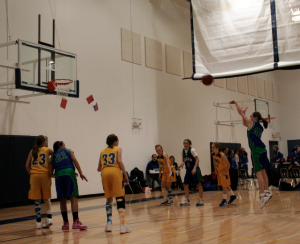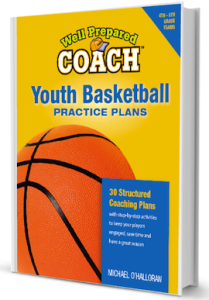Twenty nervous 10 and 11-year-olds chattered and laughed nervously before basketball tryouts. The numbers worked out well this year as the 20 players would be divided into two equal teams of 10 players.
Where Rankings Don’t Always Work
As I observed the tryouts, one of the players caught my eye. Let’s call her Amanda. Amanda was the tallest kid in the group of 20, but not particularly athletic-looking. She appeared clumsy at times. She jumped off the wrong foot for her right-hand lay-up, her dribbling skills were very rugged and like many of the players, her shooting form was lacking.
In scrimmage sessions, she tired quickly and transition play wasn’t her strong suit. However, in half-court play, Amanda was able to secure rebounds and protect the ball. And, she seemed to have a good understanding of where to position herself to get shots off the backboard at close range. However, in the scrimmages, she only made one shot.
When the rankings came back from the independent evaluators, there were 4 players in the “A” pool, 12 in the “B” pool and 4 in the “C” pool. Amanda was placed in the “C” pool. If the number of participants had been different, the “C” pool would have also been the cut pool.
Trust Your Own Eyes
Amanda, from day one, went on to lead our team in both scoring and rebounding that season. Throughout the year, she was our go-to player when we needed a basket. Any knowledgeable ranking of the players at the season’s end would have had Amanda in the top 3 players at least.

Youth Basketball Tryouts: Lessons Learned
Here’s my take:
• Most tryout drills and activities are not the forte of bigger players. Factor that into your evaluations.
Bigger players, especially at younger ages, tend to not perform as well in lay-up form, dribbling skills, and the like, as smaller players. Sure, there are lots of exceptions to that rule. But, many “bigs” are growing into their bodies, and hand-eye and foot-eye coordination can be challenging. Even scrimmages tend to favor guards. Who brings the ball up nearly every time in a tryout scrimmage? It’s the guards.
Players at younger ages are not noted for their strong passing abilities. Bigger players get fewer unearned touches. Based solely on the performance at tryout activities, many clubs might end up with a team of guards. Teams need rebounders. Teams need players who can guard bigger opposing players. Don’t underrate the bigger players — and I say that as a father of 4 players who grew up playing guards.
• Place a premium on height, athleticism, and aggressiveness — they’re hard to teach.
At younger ages especially, many kids come into tryouts not having played a lot. While kids who have played extensively will have more advanced skills, be careful not to rate them too highly on skill development alone.
With more practice time, other players will catch up and may quickly surpass the players who had the lead at tryouts. I remember one 5th-grade tryout where one of the fastest, most athletic kids had the lowest rankings because she had never played basketball before. But, with more practice time, she quickly elevated her game. By the end of the season, she was one of the top 2 players on her team. Lots of practice time will bring the cream to the top.
• Avoid cutting players.
Michael O’Halloran is the author of Youth Basketball Practice Plans and a long-time youth basketball coach.
